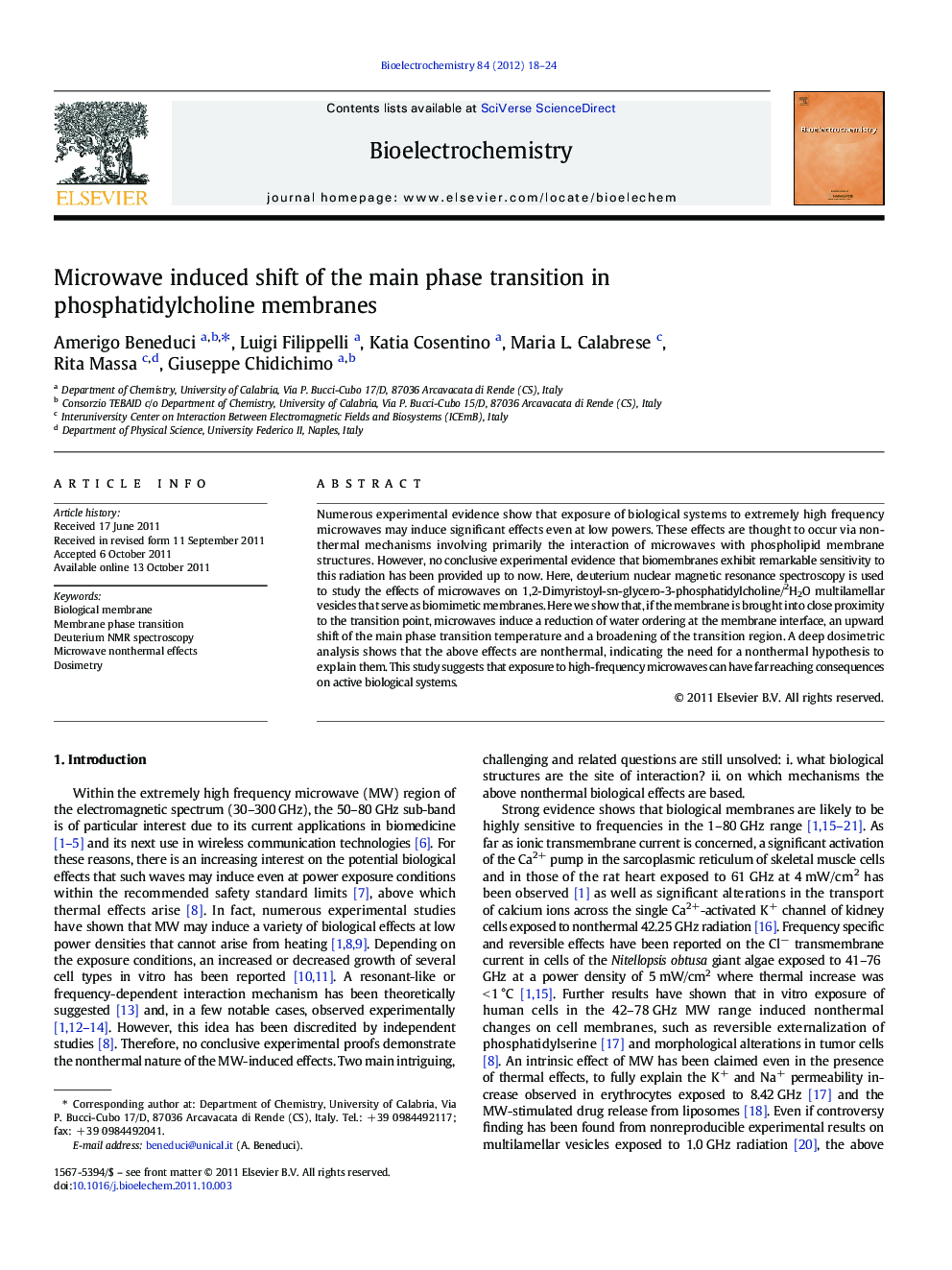| Article ID | Journal | Published Year | Pages | File Type |
|---|---|---|---|---|
| 1271920 | Bioelectrochemistry | 2012 | 7 Pages |
Numerous experimental evidence show that exposure of biological systems to extremely high frequency microwaves may induce significant effects even at low powers. These effects are thought to occur via nonthermal mechanisms involving primarily the interaction of microwaves with phospholipid membrane structures. However, no conclusive experimental evidence that biomembranes exhibit remarkable sensitivity to this radiation has been provided up to now. Here, deuterium nuclear magnetic resonance spectroscopy is used to study the effects of microwaves on 1,2-Dimyristoyl-sn-glycero-3-phosphatidylcholine/2H2O multilamellar vesicles that serve as biomimetic membranes. Here we show that, if the membrane is brought into close proximity to the transition point, microwaves induce a reduction of water ordering at the membrane interface, an upward shift of the main phase transition temperature and a broadening of the transition region. A deep dosimetric analysis shows that the above effects are nonthermal, indicating the need for a nonthermal hypothesis to explain them. This study suggests that exposure to high-frequency microwaves can have far reaching consequences on active biological systems.
Graphical abstractFigure optionsDownload full-size imageDownload as PowerPoint slideHighlights► Study of the effects of nonthermal microwaves in the 53–78 GHz frequency range on the membrane main phase transition. ► Multilamellar vescicles of DMPC/2H2O serve as biomimetic membrane. ► Membrane structure studied by 2H-NMR spectroscopy; Real time MW-NMR exposure set-up.
